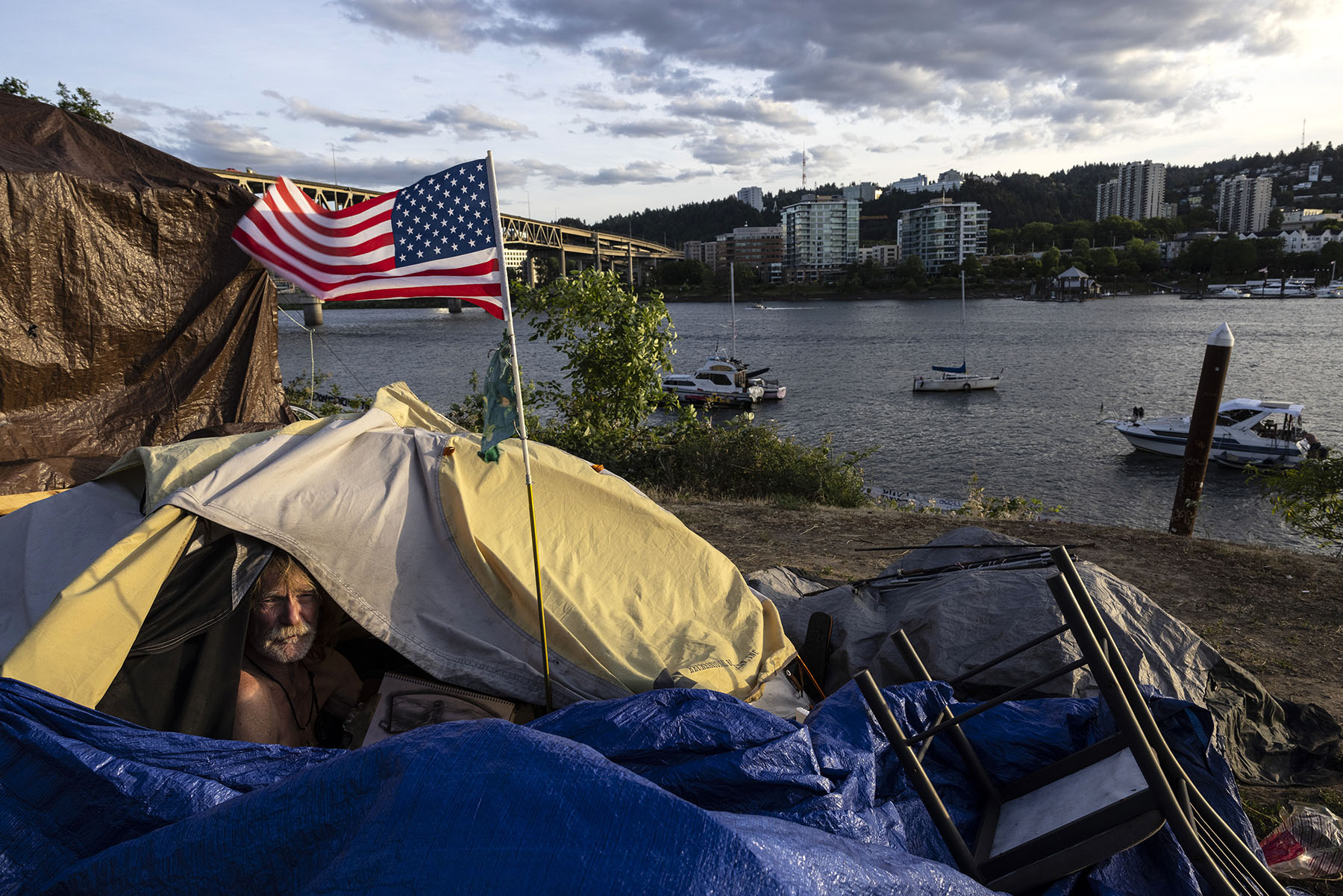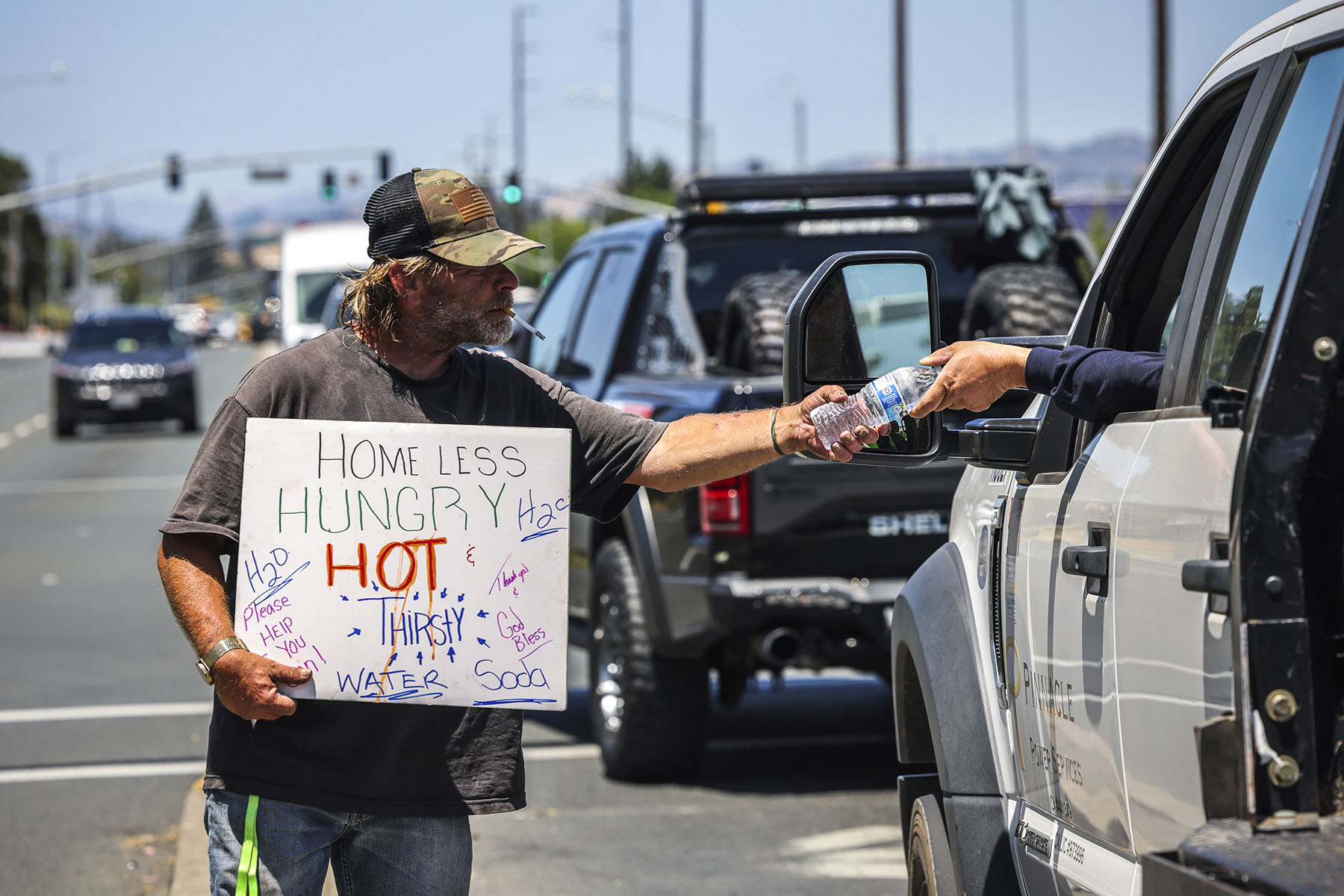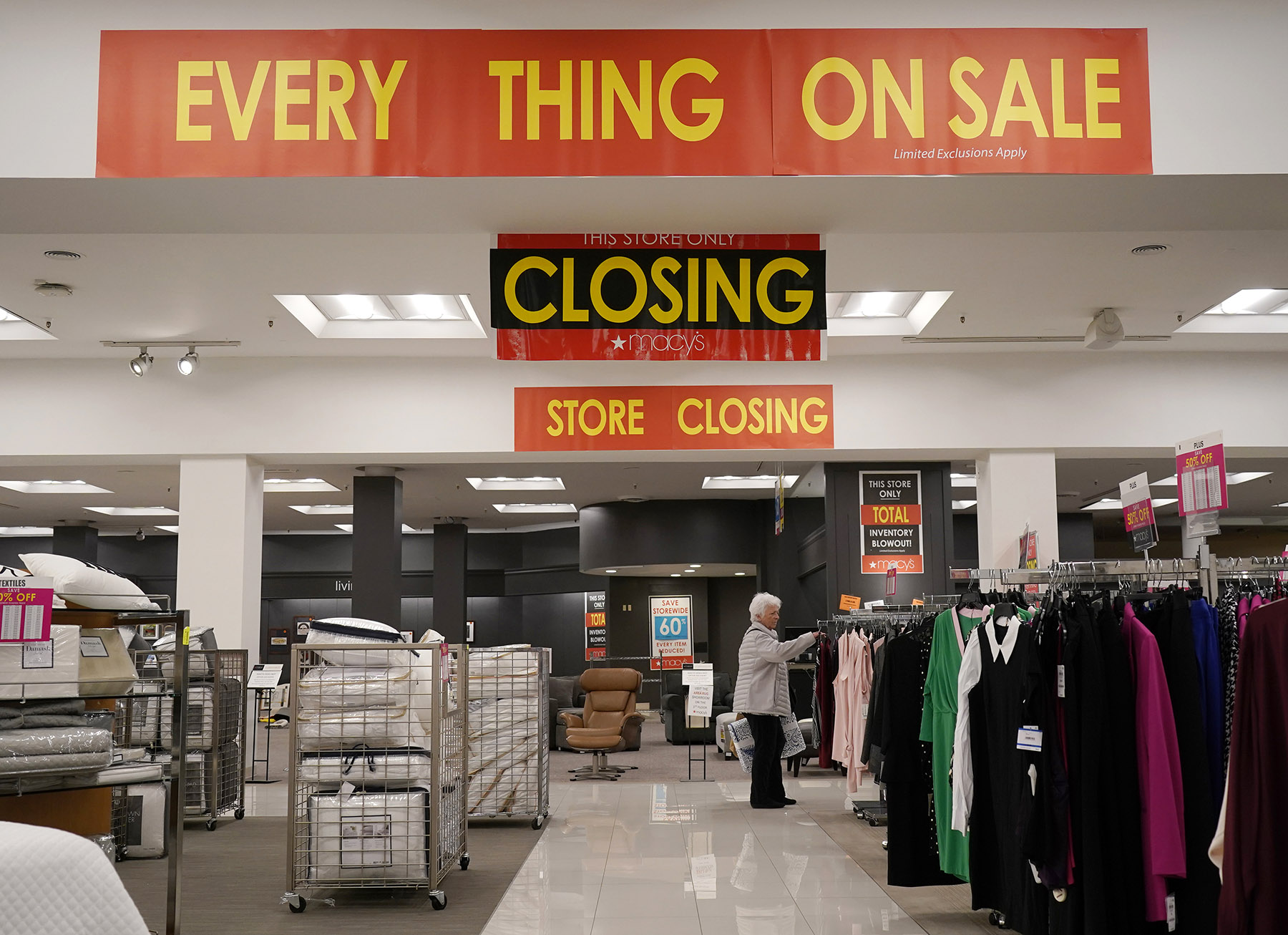While some fly off on private jets, others can barely afford to buy food

Editor's note: As the wealthy in the United States take lavish vacations, spend on luxury goods and dine out as usual, the poorest battle the fallout of inflation squeezing their abilities to afford the basics. China Daily takes a closer look at the widening wealth gap in the country.
The growing gap between the "haves and have-nots" in the United States is widening as the middle class and the uber-wealthy take lavish vacations, spend on luxury goods and dine out as usual, while the poorest battle the fallout of inflation squeezing their ability to afford the basics such as food and rent.
The majority of the millionaires and billionaires in the country are located in New York City, which has the largest number of both sets of rich people, with 350,000 millionaires and 60 billionaires, according to the USA Wealth Report from Henley and Partners and New World Wealth.
I think we’re headed toward greater openness, but not necessarily to the most fundamental racial problem of the United States, which is the position of African Americans.
Richard Alba, sociologist and distinguished professor emeritus at City University of New York and at the sociology department at the University of Albany SUNY
But nestled nearby to their most popular enclaves such as the exclusive apartment buildings on the Upper East and West sides, the endless row of luxury shops on Fifth Avenue and the towering real estate of "Billionaire's Row" on 57th Street, is real, searing poverty, say activists.
More than 1.2 million adults and children don't have enough to eat each day, according to food bank City Harvest and other groups that help feed the poor.
City Relief in New York City serves free food from mobile vans in several areas to low-income workers, migrants and the homeless. "Many rely on these meals as their only meal of the day," Corey Hayes, creative director for City Relief, told China Daily.
In the US of two halves, the wealthiest, including 1 percent, don't rely on just their jobs, but have investments, own real estate and lucrative businesses. The average Wall Street bonus for 2023 was $176,500, down from $180,000 in 2022, according to the New York State comptroller.
At least 31 properties in New York City worth $4 million and above went into contract between June 10 and 16, according to Olshan Luxury's Market report.
Since 2020, the combined wealth of the US' 737 billionaires has grown by 88 percent to $5.529 trillion, according to the Institute for Policy Studies calculations based on Forbes data.
In 2022, the Federal Reserve found that the richest 1 percent own 54 percent of all stock and mutual funds in public equity markets, a jump from the 40 percent they owned in 2002.
Wealth inequality is higher in the US than in any other developed nation and has steadily risen over the past 60 years and worsened amid the COVID-19 pandemic. It mainly affects people along the lines of gender, education and race.
READ MORE: More than 37 million people live in poverty in US
Richard Alba is a US sociologist, a distinguished professor emeritus at City University of New York and at the sociology department at the University of Albany SUNY. His 2020 book was The Great Demographic Illusion: Majority, Minority, and the Expanding American Mainstream.
Alba told China Daily that the US has seen itself for a very long time as "divided by race" and around the 1970s that meant division "between whites and blacks".
But he adds: "I think we're headed toward greater openness, but not necessarily to the most fundamental racial problem of the United States, which is the position of African Americans".
Most white families had six times the average wealth of black families and five times that of Hispanic families, research from the Urban Institute, a nonpartisan think tank, found.
In 2022, a white family's average wealth was $1.36 million, compared to Hispanic families at $227,544 and black families at $211,596, according to data from the Federal Reserve's Survey of Consumer Finances.
In a twist of fate, the same data explored the wealth of Asian families for the first time and found that their average wealth was $1.8 million — 1.3 times the average wealth of white families.
When it comes to travel among the ultrawealthy, the US is the leading country for private jet flights. There are 15,000 private jets in the US. One in every six flights handled last year by air traffic controllers for the Federal Aviation Administration was a private jet.
There were 5,298,445 private jet flight hours recorded in North America, the second highest since before the COVID-19 pandemic in 2019, data from Argus TraqPak showed.

Where are the millionaires?
Other areas besides New York where the wealthy live and play include San Francisco's Bay Area. It has more than 305,000 millionaires and 68 billionaires. Since 2014, the number of millionaires in the area has increased by 82 percent.
Austin, Texas, has 33,000 millionaires and 10 billionaires and is ranked as the fastest-growing US city for the wealthy. Sunny Miami has more than 35,000 millionaires and 15 billionaires. Los Angeles, Chicago, Boston and Washington, DC, also have their fair share.
While inflation has caused around a quarter of US people to admit that they often skip meals to avoid inflated grocery prices, a poll by Qualtrics for Credit Karma found, that among the other half of US citizens, life goes on almost unchanged.
The number of high-priced cruises being booked to far-flung destinations has surged, industry figures show. Estimates suggest there will be 34.7 million cruise passengers this year, up from 31.7 million passengers in 2019.
About 27 percent of all those who booked a cruise over the past two years did so for the first time, according to the Cruise Lines International Association, a trade group.
Meanwhile, those with cash continue to shop for personal luxury goods, including Chanel handbags, Rolex watches and fine jewelry.
Sales of these items are a good indicator of how the middle class to the wealthy are faring as retail analysts say that affluent luxury customers tend to be protected from inflation and other economic hardships.
Sought-after handbags by Hermes, Chanel, Louis Vuitton, Gucci, Balenciaga and Dior along with others are the drivers of the global luxury sector. They make up tens of billions of dollars per year in the market and the prices of the goods have gone up post-pandemic.
The brand Chanel, considered the epitome of French chic for the middle class and uber-wealthy, has implemented a 60 percent price increase since 2019 for its most popular bag.
A Chanel medium classic flap bag currently costs $10,800 in-store. In 2010, the same bag cost $5,800. The price rises have not stopped those who can afford it from shopping.
Even the secondhand luxury market is booming and is worth $2.6 billion in the US and $49 billion globally, Forbes reported. Sites like Fashionphile, The RealReal and eBay sell pre-loved designer items such as bags, shoes and fine jewelry at a discount.
Hazel Clark, a fashion and design studies lecturer at New York's New School, told China Daily: "I suspect that the people who pay full price for a Louis Vuitton or Balenciaga can also afford to buy the pre-loved version."
From 2019 to 2023, luxury sales overall were up by 30 percent, according to Boston-based Bain and Company. They topped $301 billion in 2019, and while there was slight turbulence amid the pandemic when sales fell, they rebounded by 2022 and sales were $387 billion.
But in what may be a sign of a slight reduction in spending, last year, there was an 8 percent decline in revenue among luxury goods makers in the US. Bain said it expected a "relatively soft personal luxury goods performance in 2024".
While the cost of a new Chanel handbag or the location of the newest eatery may be the biggest worry for some, in other areas of the country, including big cities like Los Angeles and New York and the Deep South, there is deep poverty that often affects multiple generations.
Mississippi ranks as having the population that earns the least in the US, with a median annual wage of just $37,500, according to the US Bureau of Labor Statistics, or BLS.
Arkansas, West Virginia, Louisiana, Alabama and others are also low-earning states. Yet it's important to note the cost of living in these states is lower than some big cities.
The average US citizen made $59,384 in 2023, according to BLS. But around 50 million US people who have 15 million children have incomes below $34,500 for a family of four or $17,500 for an individual, which is considered 125 percent below poverty.
Since the 1990s, the US' wealthiest families have added to their net worth, but those on the bottom have slipped into debt or "negative wealth", according to National Bureau of Economic Research data.
At least 28 percent of black households and 26 percent of Latino households had zero or negative wealth in 2019, double that of white families.
Additionally, US citizens collectively owe $1.13 trillion in credit card debt. Generation X — those between 43 and 58 years old — had the most at about $9,123 each in the third quarter of 2023, according to Experian. The average amount owed on plastic across generations was $6,501.
The strain on finances has led many on low income to change their eating habits by dining out less and cooking at home more, say fast food chains.
McDonald's saw global comparable sales growth slide for the fourth quarter in a row to 1.9 percent in April.
" (The) consumer is certainly being very discriminating in how they spend their dollars," McDonald's CEO Chris Kempczinski said on a post-earnings call. "I think it's important to recognize that all income cohorts are seeking value."
Elsewhere, Yum Brands, which owns KFC, Taco Bell and Pizza Hut, also saw weak growth. McDonald's announced a price reduction to lure cash-strapped customers back.
In June, budget chain Target said it would slash prices on 5,000 items. Meanwhile, Walgreens is also offering steep discounts. Overall, most discounts will be on groceries and general merchandise including household goods like toilet paper. For some, it can't come soon enough.
Jonathan Bonds, 40, a plumber and carpenter from Brooklyn, said the increase in food prices and other costs had left him "barely above water". Bonds told China Daily, "Food, rent, is very difficult as well as everyday costs."

Sign of relief
In a sign of relief, the consumer price index from a month ago showed that a range of everyday items including staples like bread, milk and poultry all got cheaper between March and April this year.
But overall, 65 percent of adults said that despite progress on inflation, just trying to cope had made their financial situation worse, the Fed's Economic Well-Being of US Households survey found.
Around 72 percent said that they were doing "okay" financially. In 2021, that number was 78 percent.
Childcare is another area that has been stressful among those on a low income. The percentage of parents with children under the age of 18 who said they were "doing okay" fell from 69 percent in 2022 to 64 percent in 2023, the Fed survey found.
While the wealthier group shares the same problem as those on a low income of finding the right childcare, for the rich, there is no price too high to pay for getting the perfect nanny for their little ones.
Childcare providers for billionaires in New York City can reportedly earn $167 an hour or $2,000 per day, CNBC found. And the nannies not only enjoy flying on private jets but also have the perks of all-expenses-paid trips to international luxury destinations.
In contrast, many low-income workers say that rent is one of their biggest expenses. The median cost of rent nationwide was $1,987 per month as of April, according to Rent.com. In New York, the median cost of rent per month was $3,600 to $8,203, in Los Angeles, it's $2,174 to $3,790.
Los Angeles was recently ranked as one of the most unaffordable places to live, according to the annual Demographic International Housing Affordability Report. It found that cities in California were the most expensive US cities in which to buy a home.
For hundreds of thousands of US citizens, the cost of housing is so unaffordable that they are forced into homelessness.
In 2023, sheltered and unsheltered homelessness was the highest it has ever been since data reporting began in 2007. At least 13 percent more individuals were experiencing homelessness last year than 17 years ago.
It is estimated that on any single night in 2023, 653,100 people in the US were homeless, according to the 2023 US Department of Housing and Urban Development's Annual Homeless Assessment.
Benjamin Henwood, a professor at the Suzanne Dworak-Peck School of Social Work at the University of Southern California, told China Daily that "a lack of affordable housing" was a key reason for homelessness in Los Angeles.
The strain on people's finances meant that almost two-thirds of adults felt they were worse off because of the effect of high prices for the past few years, the Fed's survey found.
Less than half of US people polled in a separate study by Bankrate said they are able to raise $1,000 in an emergency.
And just under half of women aged 55 to 66 and 47 percent of men who took part in a poll said that they have no retirement savings, according to US Census Bureau data.
ALSO READ: Increased spending pushes 2024 US budget deficit estimate to $1.9t
Most homeless families were in some kind of temporary shelter in 2023. But 9 percent of those families with children were in unsheltered locations such as cars, abandoned buildings, or outdoors, HUD's Homeless Assessment Report found.
In a move aimed at helping people living in their cars, safe parking lots have sprung up nationwide in several counties in California, as well as in Duluth, Minnesota, Green Bay, Wisconsin, King County, Washington, Denver and other states.
The initiatives allow people to leave their car in a locked, monitored parking area, so that they can stay in it overnight safely until 7 am the next day.
Jesus Garcia, program coordinator for CAREavan, a safe parking lot in Union City, California, sees all kinds of people living in their cars and believes that it is important to remember that life can take a turn for the worse for anyone.
Garcia told China Daily: "It's everyone from a college student who doesn't have a place to stay and needs a safe place to park, to people who have fallen on hard times, because of disease or something and they've had to choose between staying in a home or taking their meds to the senior couples who just can't afford a place on their retirement income. It just doesn't surprise me anymore."


